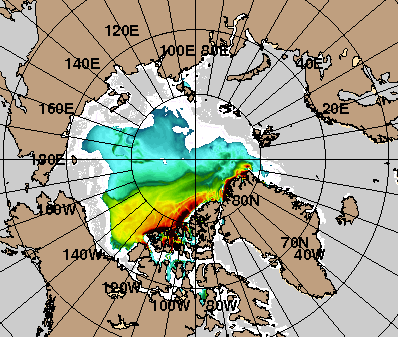The animation below alternates between 2012 and 2013 ice which is at least 1.5 metres thick. There has been a huge increase in thick ice, and by next spring, most of that region will be more than three metres thick, of thin rotten decayed ice.
Disrupting the Borg is expensive and time consuming!
Google Search
-
Recent Posts
- Fact Checking NASA
- Fact Checking Grok
- Fact Checking The New York Times
- New Visitech Features
- Ice-Free Arctic By 2014
- Debt-Free US Treasury Forecast
- Analyzing Big City Crime (Part 2)
- Analyzing Big City Crime
- UK Migration Caused By Global Warming
- Climate Attribution In Greece
- “Brown: ’50 days to save world'”
- The Catastrophic Influence of Bovine Methane Emissions on Extraterrestrial Climate Patterns
- Posting On X
- Seventeen Years Of Fun
- The Importance Of Good Tools
- Temperature Shifts At Blue Hill, MA
- CO2²
- Time Of Observation Bias
- Climate Scamming For Profit
- Climate Scamming For Profit
- Back To The Future
- “records going back to 1961”
- Analyzing Rainfall At Asheville
- Historical Weather Analysis With Visitech
- “American Summers Are Starting to Feel Like Winter”
Recent Comments
- arn on Fact Checking NASA
- Bob G on Fact Checking NASA
- arn on Fact Checking NASA
- Bob G on Fact Checking NASA
- conrad ziefle on Fact Checking NASA
- conrad ziefle on Fact Checking NASA
- Bob G on Fact Checking NASA
- arn on Fact Checking NASA
- arn on Fact Checking NASA
- Bob G on Fact Checking NASA



No hurricanes, low tornado count, massive ice recover in the Arctic.
2013, the year that alarmists heads exploded trying (and failing) to explain it all away.
Reblogged this on Health Science Watch.
It you draw a line running north from the top of Greenland, through the north pole and extend it to the Siberian coast you can approximate the portion of the ice pack most susceptible to being moved into warm waters by the transpolar drift. The region to the Atlantic side of that line is likely to get routed to the Barents Sea or down the Fram Strait to melt in the Atlantic. The region to the Beaufort Sea side of the line is likely to recirculate in the Beaufort Gyre and thus stick around for a few years. The percentage of MYI on the Gyre side of the ice pack is much greater than any of the post-2006 years and suggests that this rebound from the recent ice area lows has the potential to be a new multi-year trend.